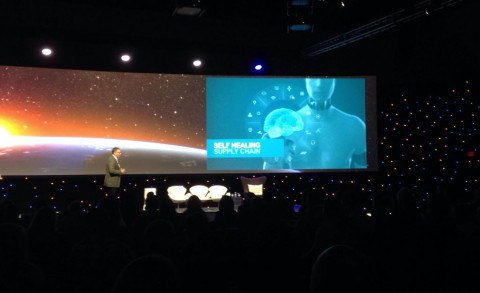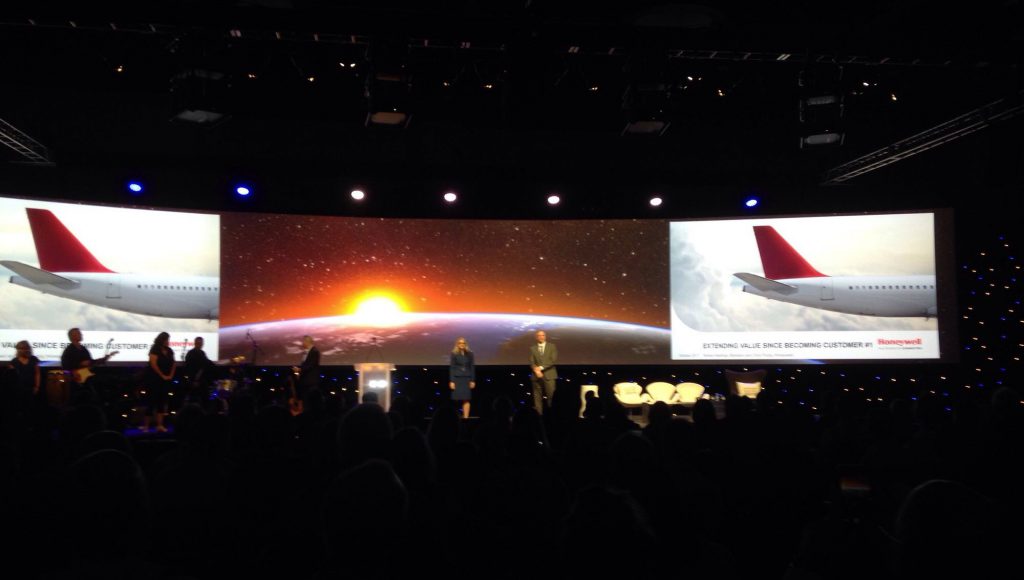From catching up with the very first Kinaxis customer to exploring the future of supply chain, day one of Kinexions, our annual user and training supply chain conference, proved to be an out-of-this-world learning experience, aptly set to a soundtrack of songs by ‘80s rock group Journey. And what a journey day one at Kinexions has been. Here are just a few of the great insights coming from the conference:
“Artificial intelligence and machine learning aren’t magical pixie dust.” John Sicard, CEO, Kinaxis
As Kinaxis CEO John Sicard put it, artificial intelligence (AI) and machine learning (ML) aren’t magic, but they can help you create a little in your supply chain. Sicard talked about the notion of a self healing supply chain, one based on machine learning algorithms, which can help you:
- Detect deviations
- Analyze and make intelligent predictions on what your values should be
- Heal itself automatically
- Monitor performance improvement and value over time
Sicard stressed the importance of recognizing that ML isn’t just a platform that lets you do all kinds of cool, futuristic stuff. It’s about building use cases and practical applications that drive real, substantiated business results by comparing as designed to as demonstrated.
“AI in supply chain is a lot like teenagers having sex. Everyone talks about it, but no one knows how it’s done.” Brian Tessier, VP Global Supply Chain Innovation, Schneider Electric
Brian Tessier from Schneider Electric spoke directly about one of those use cases, outlining how Kinaxis and Schneider Electric jointly explored lead time and forecasting scenarios, analyzing 18 million records in the process. Tessier noted supply chain is an evolving process and requires exploration and testing. He too believes in the notion of a self healing supply chain, one that can correct conditions causing problems automatically. It would grab, combine and architect data to solve problems you didn’t even know you had. But he cautions you have to have a concept that really rings true with people – something that’s relatable and inspiring. Otherwise, the project is doomed to fail.
“It has to be about improving the quality of life inside and outside of work.” Kristen LeBaron, Director of Supply Chain, Lippert Components
Engaging users was a lesson Lippert Components learned while going through its demand planning improvement initiative. As Kristen LeBaron, Matt Getz and Scott Meiner explained, their company needed to undergo a cultural shift in order to overcome the kind of internal gaming that was going on. LeBaron described how in the past the company’s decentralized model meant departments were working against each other. One example she gave was how one unit would make as much product as its capacity allowed and then ship it to another internal facility, thus allowing that one business unit to meet both inventory reduction and capacity goals. Unfortunately, it came at the expense of another team, who now had to deal with the inventory. By bridging functional silos and involving end users in the discovery process, Lippert Components was able to overcome the resistance to change when implementing new processes and technology and the fear of the unknown.
“RapidResponse plus supply chain equals a dream job.” Chris Putzig, RapidResponse Developer and Administrator, Honeywell and Teresa Hastings, Solution Architect, Barkawi
In their presentation on extending value since becoming Kinaxis customer number one, Chris Putzig and Teresa Hastings spoke at length about Honeywell’s 20-year journey with RapidResponse and the role user engagement played. While improving efficiencies in part matching has led to savings of a million dollars a year, they believe the real value comes from continual user adoption. All of which helped them move away from spreadsheet-based planning and led to the revelation that there is an easier way. For them, managing supply chains with RapidResponse was the dream job they never knew they wanted.
Were you at Kinexions? What other great insights did you take away from the first day of the supply chain conference? Let us know in the comments area.






Leave a Reply